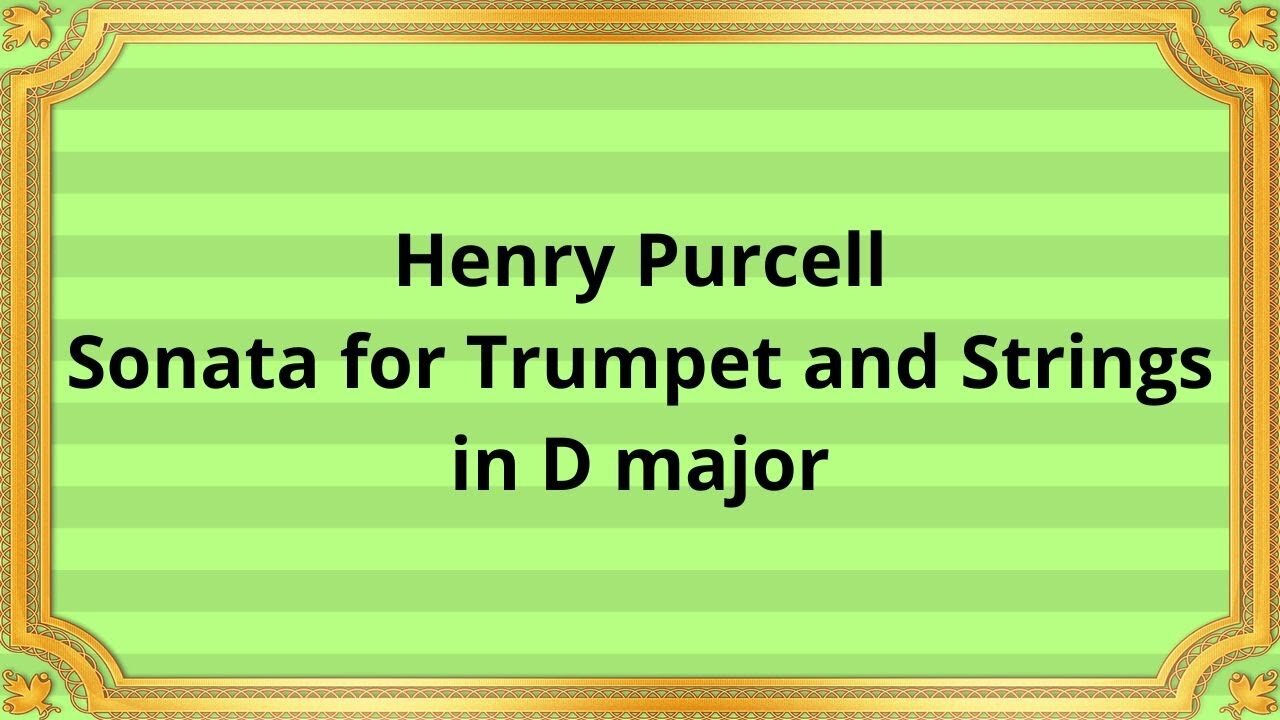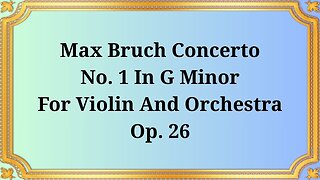Premium Only Content

Henry Purcell Sonata for Trumpet and Strings in D major
#ClassicalMusic #MusicalComposition #HenryPurcell #SonataForTrumpetAndStrings #DMajor #BaroqueMusic #EnglishComposer #TrumpetVirtuosity #StringEnsemble #OrnamentalMelodies
Monteverdina Academy Orchestra, conductor: Denis Stevens
Henry Purcell's Sonata for Trumpet and Strings in D major is a captivating musical composition that exemplifies the beauty and virtuosity of the Baroque era. Composed in the late 17th century, this piece showcases Purcell's mastery of instrumental writing and his ability to highlight the brilliance of the trumpet within a string ensemble.
Henry Purcell, an English composer of the Baroque period, made significant contributions to the development of English music. Composed around 1680, the Sonata for Trumpet and Strings in D major reflects the flourishing musical scene in London during Purcell's time. Trumpet music was gaining popularity, and Purcell's composition exemplified the growing interest in the instrument's expressive possibilities.
The Sonata for Trumpet and Strings in D major showcases Purcell's skillful combination of the trumpet's brilliance with the rich sonorities of the string ensemble. The composition consists of four movements, each with its distinct character and mood.
The opening movement, marked "Allegro," introduces a vibrant and energetic atmosphere. The trumpet takes the lead, presenting bold and majestic melodies, while the strings provide a supportive and harmonious backdrop. This movement exemplifies Purcell's ability to create a sense of grandeur and celebration.
The second movement, "Adagio," presents a contrasting mood, introducing a lyrical and introspective character. The trumpet engages in a dialogue with the strings, weaving expressive melodies that evoke a sense of longing and melancholy. Purcell's use of ornamentation adds depth and emotion to this movement, showcasing his mastery of melodic embellishment.
The third movement, "Allegro," returns to a lively and spirited tempo. It features a playful and joyful character, with the trumpet and strings engaging in a delightful musical conversation. Purcell's intricate counterpoint and rhythmic interplay add to the overall sense of exuberance and virtuosity.
The final movement, "Largo," brings the sonata to a majestic and satisfying conclusion. It features a slower tempo, allowing the trumpet to shine with its brilliant and expressive qualities. The strings provide a rich harmonic foundation, creating a sense of grandeur and triumph.
Henry Purcell's Sonata for Trumpet and Strings in D major has remained a beloved piece in the classical music repertoire. Its combination of elegant melodies, virtuosic trumpet passages, and skillful interplay between the trumpet and strings captivates audiences to this day. The composition's charm lies in its ability to showcase the trumpet's brilliance while maintaining a balanced and harmonious relationship with the accompanying string ensemble.
Henry Purcell's Sonata for Trumpet and Strings in D major stands as a testament to the composer's skillful craftsmanship and his ability to create captivating and expressive music. This remarkable composition exemplifies the elegance and virtuosity of the Baroque era, showcasing Purcell's ability to highlight the trumpet's brilliance within a string ensemble. The enduring appeal of this work lies in its ability to transport listeners to a world of grandeur and beauty, captivating them with its elegant melodies and virtuosic passages.
You have the opportunity to support the channel:
https://destream.net/live/RadSiarAl/donate
https://www.buymeacoffee.com/6355radsiaral
-
 24:35
24:35
Classical music_Music Inspiration
15 days agoMax Bruch Violin Concerto No. 1 in G minor, Op. 26
851 -
 4:23
4:23
Blackstone Griddles
15 hours agoEasy Salmon Dinner on the Blackstone Griddle
19.4K1 -
 8:10
8:10
WhaddoYouMeme
1 day ago $0.02 earnedChristians, Before You See “Testament”, Watch this!
2.34K3 -
 8:42
8:42
Freedom Frontline
13 hours agoDurbin’s Trump Smear Video Just HUMILIATED Him in the Senate
3.62K -
 10:56
10:56
ariellescarcella
11 hours agoThe Shocking Divide Among College Voters Sparks Worry For America
2.66K5 -
 13:09
13:09
Forrest Galante
10 hours agoWildlife Expert Reacts To Deadly Australian Animal TikToks
47K4 -
 12:08
12:08
Zoufry
2 days agoThe Mystery of Gaddafi's Final 24 Hours
8.67K11 -
 18:25
18:25
Liberty Hangout
13 days agoAnti-Ice Demonstrators Love Poop!
44.4K64 -
 9:39
9:39
MattMorseTV
16 hours ago $1.05 earnedVance just DROPPED a BOMBSHELL.
40.2K64 -
 23:47
23:47
GritsGG
1 day agoThe Forgotten Best Sniper Support AR!
15.5K3